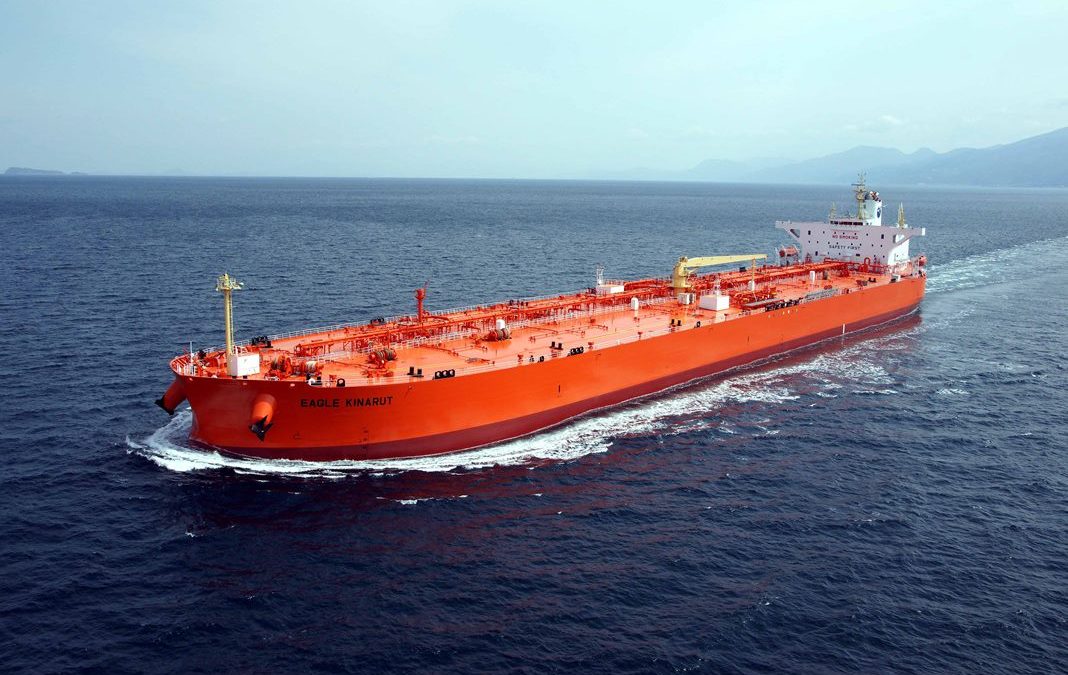Earnings on voyages made by product and midsize crude tankers reached elevated levels in the second quarter of 2022, and are expected to remain steady to higher in the coming months as the market continues to grapple with energy security and the resulting trade-flow shifts, tanker owner International Seaways said Aug. 9.
“Tanker fundamentals are anticipated to remain attractive, supported by growing demand, limited fleet growth, and higher utilization from longer distances with supply growth in the West and demand growth in the East,” International Seaways CEO Lois Zabrocky said in the company’s Q2 earnings call.
Total voyage earnings on International Seaways’ product tankers more than doubled from Q1 to Q2, jumping to just over $126 million from $61 million previously. Total earnings multiplied nine times from Q2 2021, just before the company completed a merger with Diamond S shipping in July 2021, which added 40 additional product tankers to the company’s fleet list.
Medium Range tankers were a driving force in the matter, with average time charter equivalent, or TCE, earnings for Q2 2022 clocking in at $30,400/d, up from $10,600/d in Q2 2021.
Freight for the benchmark 38,000 mt USGC-Brazil and USGC-Chile runs have reached sky-high levels, last assessed at w445, or $87.58/mt, and $3.75 million, or $98.68/mt, Aug. 8, respectively, according to Platts assessments by S&P Global Commodity Insights. Freight for the routes have increased by 45.9% and 38.9% from the end of Q1 2022, respectively.
Ton-mile demand growth for 2022 is expected at 10% for product tankers, Zabrocky said, driven by an increase in gasoline and middle distillate demand from Europe as the region look to replace Russian barrels and as Latin America continues to recover from coronavirus-related demand destruction.
“As energy security becomes a priority and Russia continues action in Ukraine, we are seeing Atlantic Basin product demand soaking up tonnage with products sourced from the US, the Middle East, and India, creating long-haul voyages for our vessels,” Zabrocky said.
The crude tanker segment saw significant, albeit less dramatic, jumps in earnings, with International Seaways’average TCEs for Very Large Crude Carriers at $16,400/d, Suezmaxes at $23,700/d, and Aframaxes at $34,100/d, up 19.7%, 28.1%, and a massive 298% quarter on quarter, respectively.
Dirty tanker spot freight has remained elevated since Russia invaded Ukraine on Feb. 24, as European crude buyers have looked to replace Russian crude barrels with other sources, including USGC-origin parcels. With Aframaxes the main workhorse of trans-Atlantic runs, the segment saw the initial spike in rates after the invasion, opening up intertrade opportunities for charterers to book larger Suezmaxes and VLCCs to avoid high freight.
Platts last assessed the benchmark 70,000 mt USGC-UK Continent run at w270, or $50.54/mt, Aug. 8, the highest level since January 2020.
VLCC freight recovery on horizon
The VLCC segment has been slower to see spikes in freight amid a ton-mile demand destruction period created by muted demand for USGC exports to Asia, namely China, and an increase in flows on VLCCs to Europe, a voyage that takes significantly less time to transit.
The benchmark 270,000 mt USGC-China run was last assessed Aug. 8 at lump sum $7.15 million after it peaked at $8 million April 7-8, the highest level since May 2020 during the floating storage boom.
Freight ideas for VLCCs in the short to medium term have turned bullish, however, as China, a major demand hub, continues to ramp up refinery rates and crude throughput on the back of the slow reversal of coronavirus lockdown measures.
“I do think the VLCCs will come along to the party in due course,” Zabrocky said. “In the meantime, the Suezmaxes and Aframaxes are the star beneficiary in the western hemisphere.”
Additionally, US crude exports remain at elevated levels, with the four-week rolling average reported at 3.711 million b/d for the week ended July 29, according to the US Energy Information Administration.
Fleet supply replenishment levels sinking
In the medium to long term, all eyes are on the dwindling tanker orderbook, which is expected to bring significant tightening to the global fleet list.
The overall global tanker orderbook is at 5% of the total fleet, International Seaways said in their earnings presentation Aug. 9.
“This is the lowest level since modern record keeping,” Zabrocky said.
The low orderbook levels are attributed to high newbuild prices, uncertainty around future environmental regulations, high investment levels in scrubber technology, and the lack of any shipyard space through 2025 due to increased demand from other shipping sectors.
“This could be the last year of any net fleet growth in the tankers for awhile, it is looking flat to negative from 2023 and on,” the company’s CFO Jeff Pribor said.
International Seaways owns and operates a fleet of 78 ships, which includes 13 VLCCs, 13 Suezmaxes, five Aframaxes, eight Long-Range 1 and 39 Medium-Range tankers.
Source: Hellenic Shipping News






